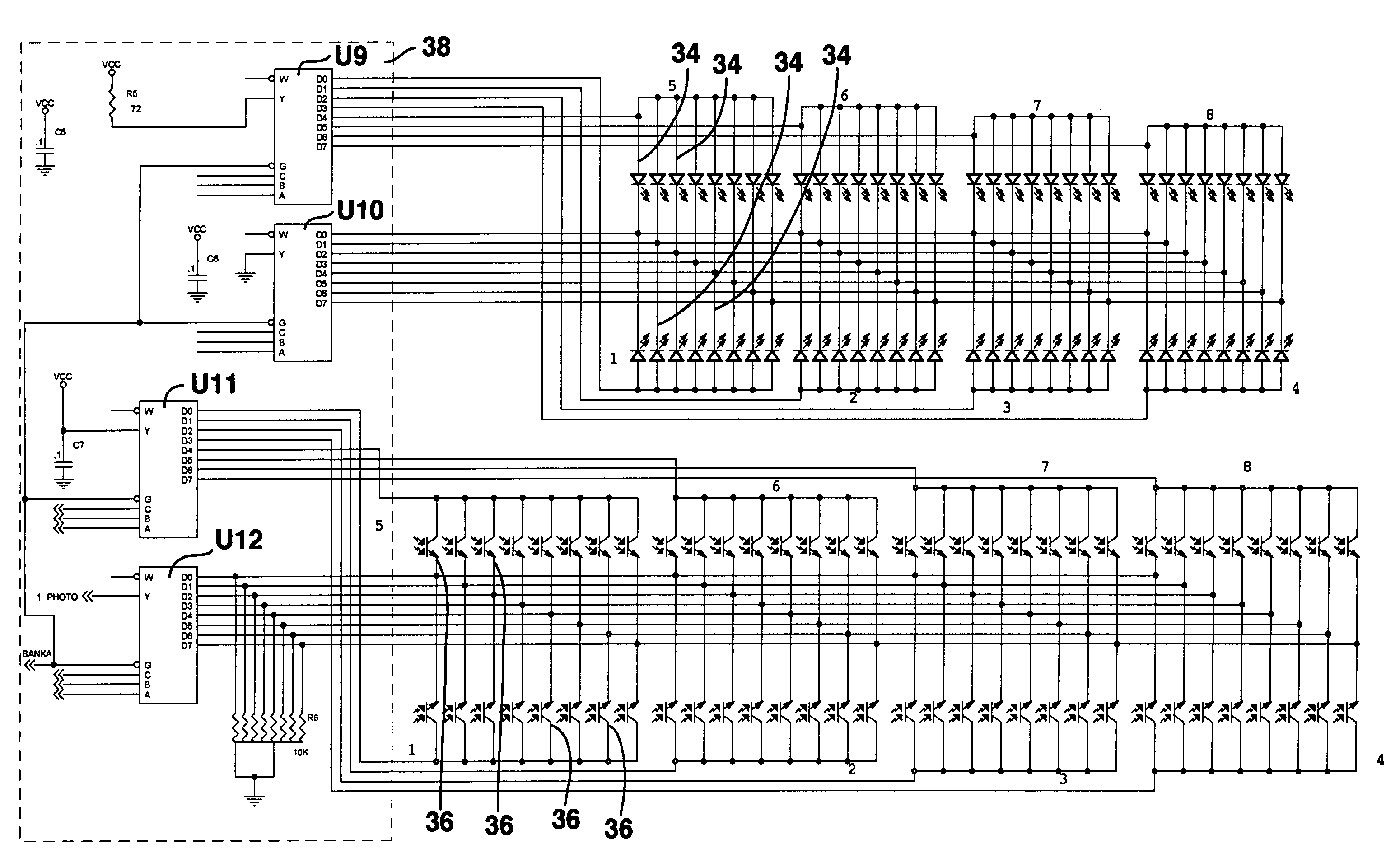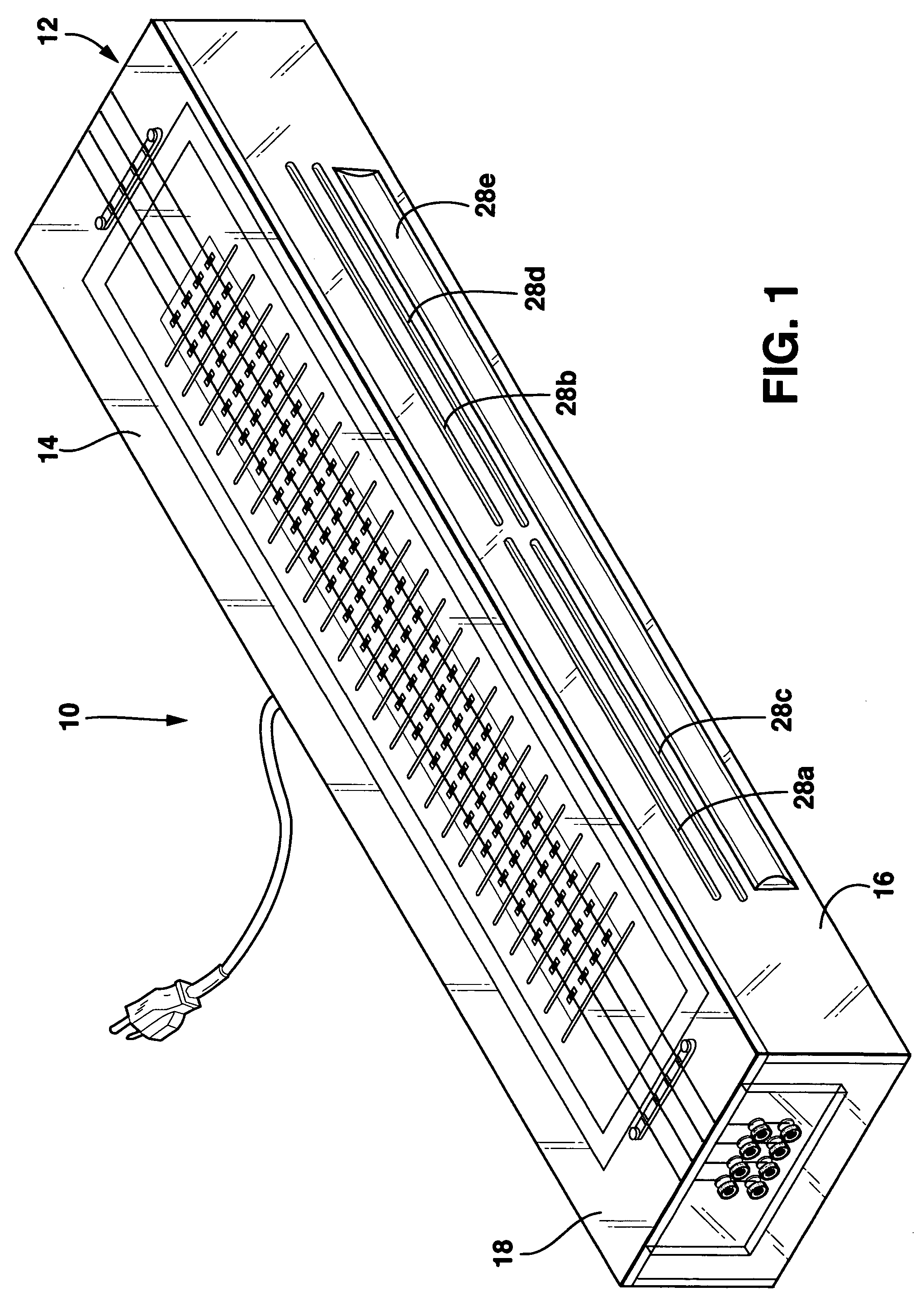Musical instrument
a technology of musical instruments and instruments, applied in the field of musical instruments, can solve the problems of delay between the played note and the sound produced, the key is then unavailable for playing notes, and the controller suffers in comparison to the original instrument in terms of expressiveness or technical limitations, and achieves the effects of less cost, easy production, and rapid modulation of notes
- Summary
- Abstract
- Description
- Claims
- Application Information
AI Technical Summary
Benefits of technology
Problems solved by technology
Method used
Image
Examples
Embodiment Construction
[0054]The musical device of the present invention is shown in FIGS. 1-17 generally labeled 10. The musical device 10, in the preferred embodiment shown in FIGS. 1-7, has a main body 12 with a fingerboard 14. The main body 12 has a front 16 and a top 18. The fingerboard 14 is located on top 18 of the main body 12.
[0055]The fingerboard 14 resembles a conventional fret board on a guitar that has been placed on its back. Consequently the fingerboard 14 has a series of frets 20 equally spaced along the fingerboard 14 with the same spacing that is used on conventional computer keyboards. This equal spacing is in contradistinction to the spacing of frets on guitars whose frets are spaced with progressively smaller intervals with higher pitches. The function of the frets 20 is both to provide feedback as to the note position on the fingerboard 14 and to make an electrical contact with strings 22 as will be described hereafter. The frets 20 are preferably spaced from each other in a parallel...
PUM
 Login to View More
Login to View More Abstract
Description
Claims
Application Information
 Login to View More
Login to View More - R&D
- Intellectual Property
- Life Sciences
- Materials
- Tech Scout
- Unparalleled Data Quality
- Higher Quality Content
- 60% Fewer Hallucinations
Browse by: Latest US Patents, China's latest patents, Technical Efficacy Thesaurus, Application Domain, Technology Topic, Popular Technical Reports.
© 2025 PatSnap. All rights reserved.Legal|Privacy policy|Modern Slavery Act Transparency Statement|Sitemap|About US| Contact US: help@patsnap.com



